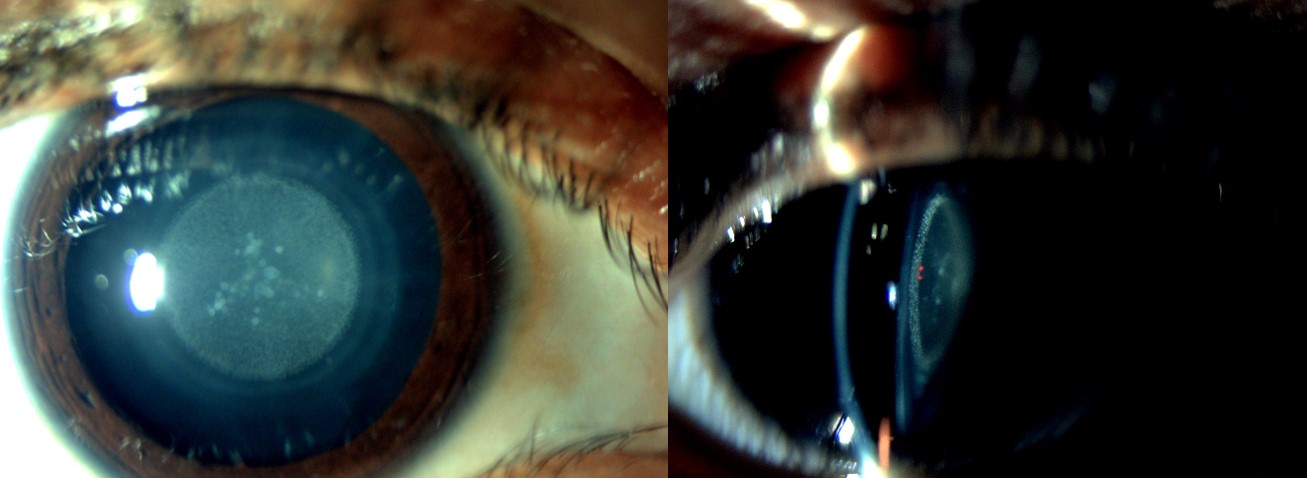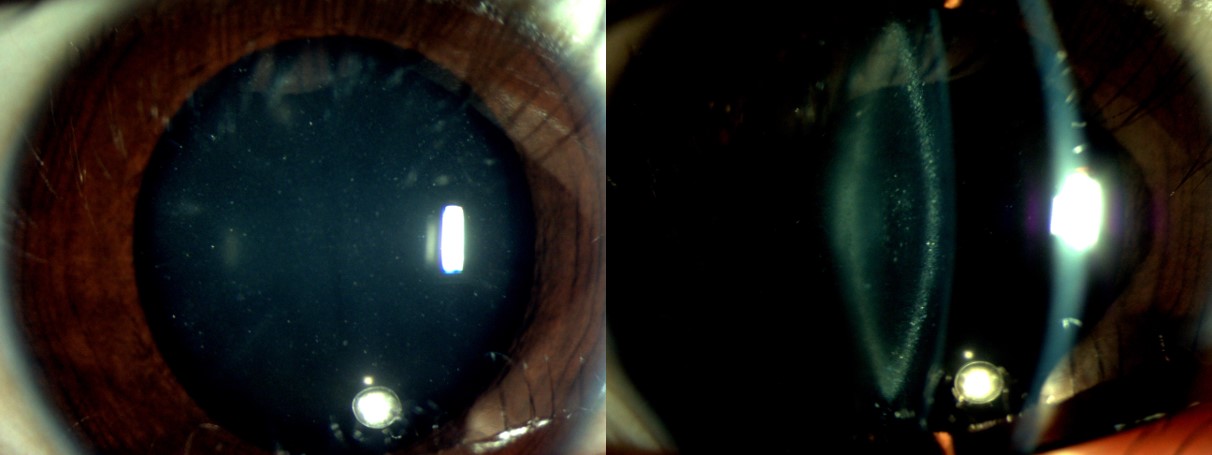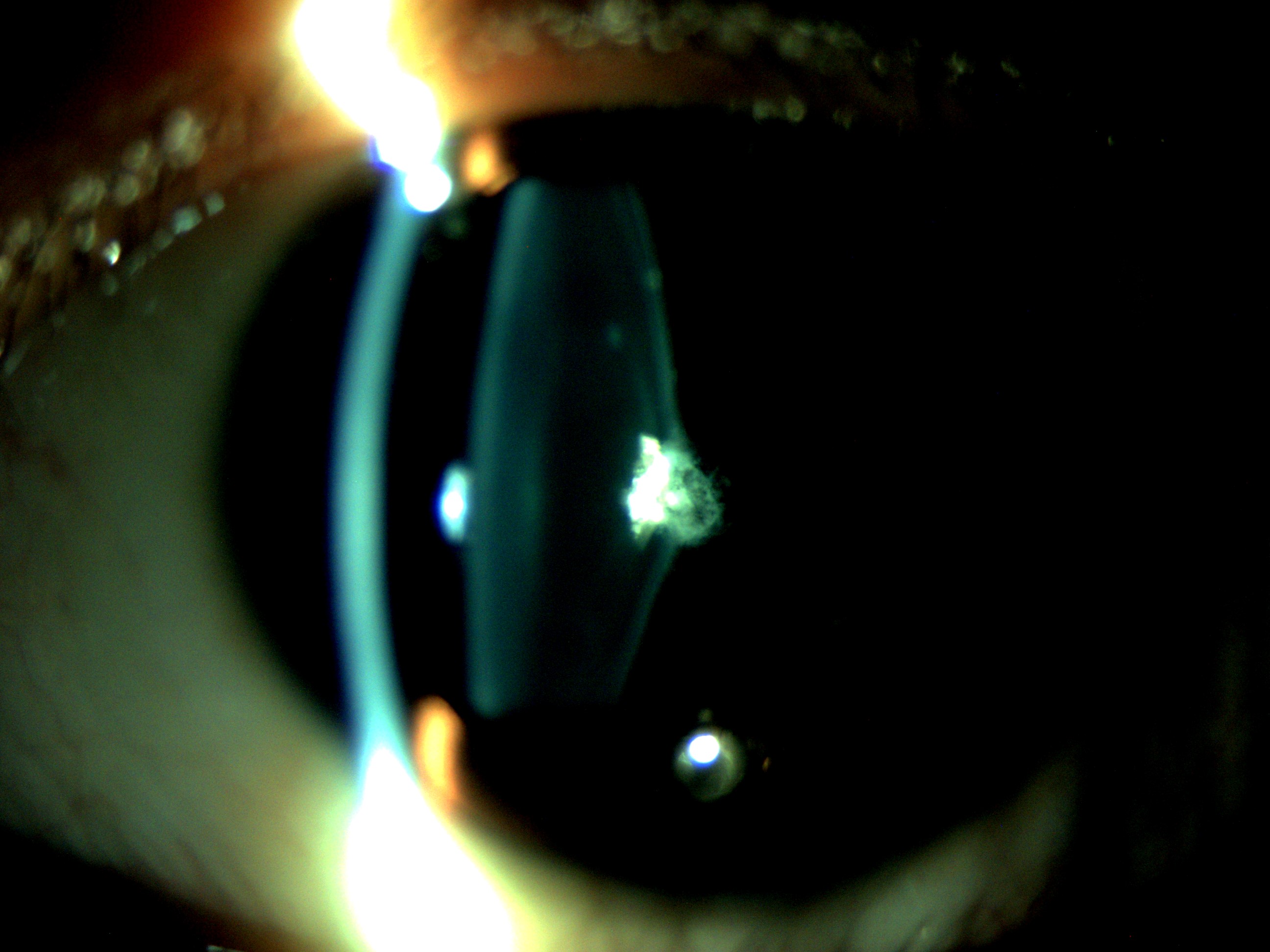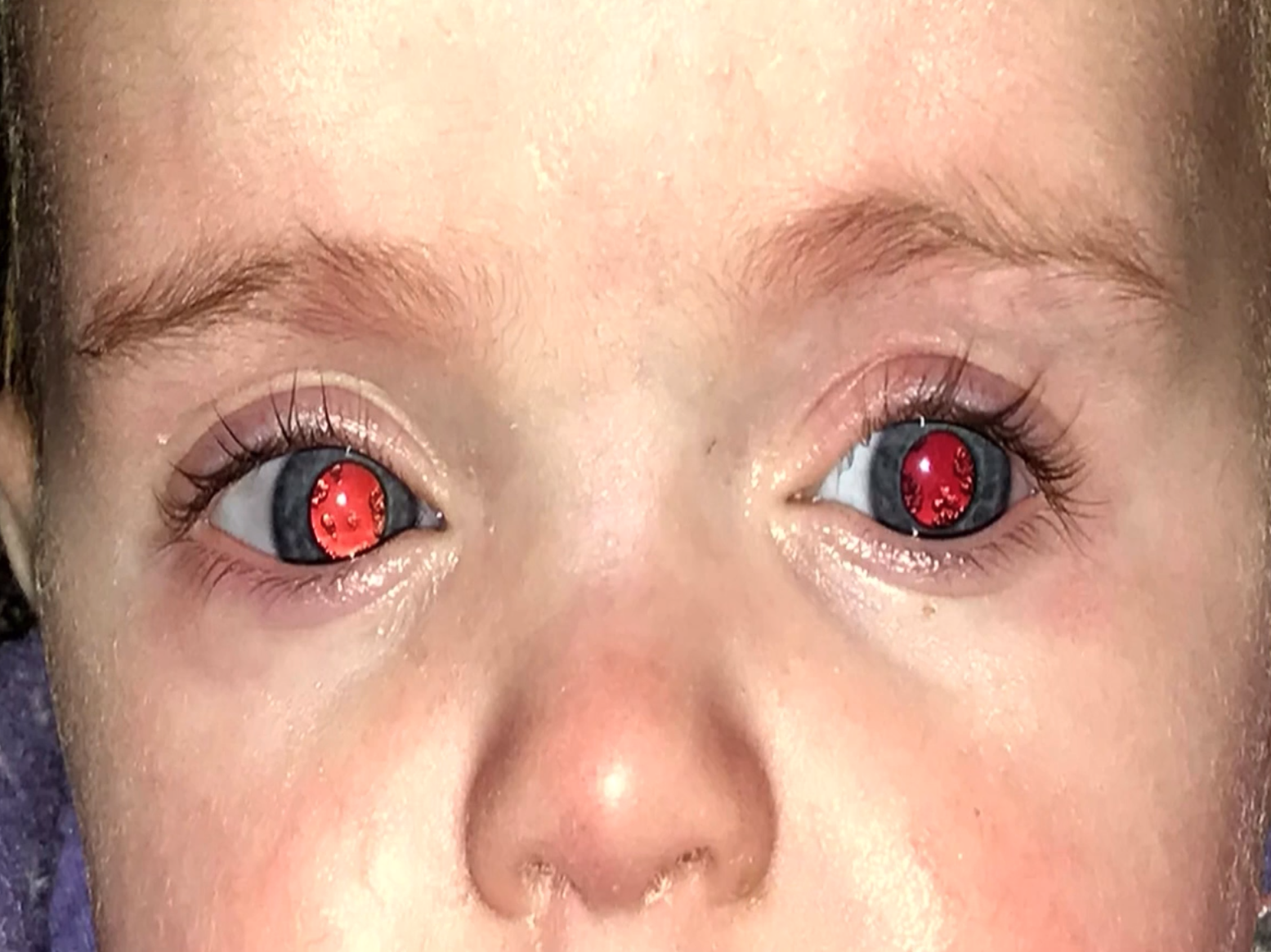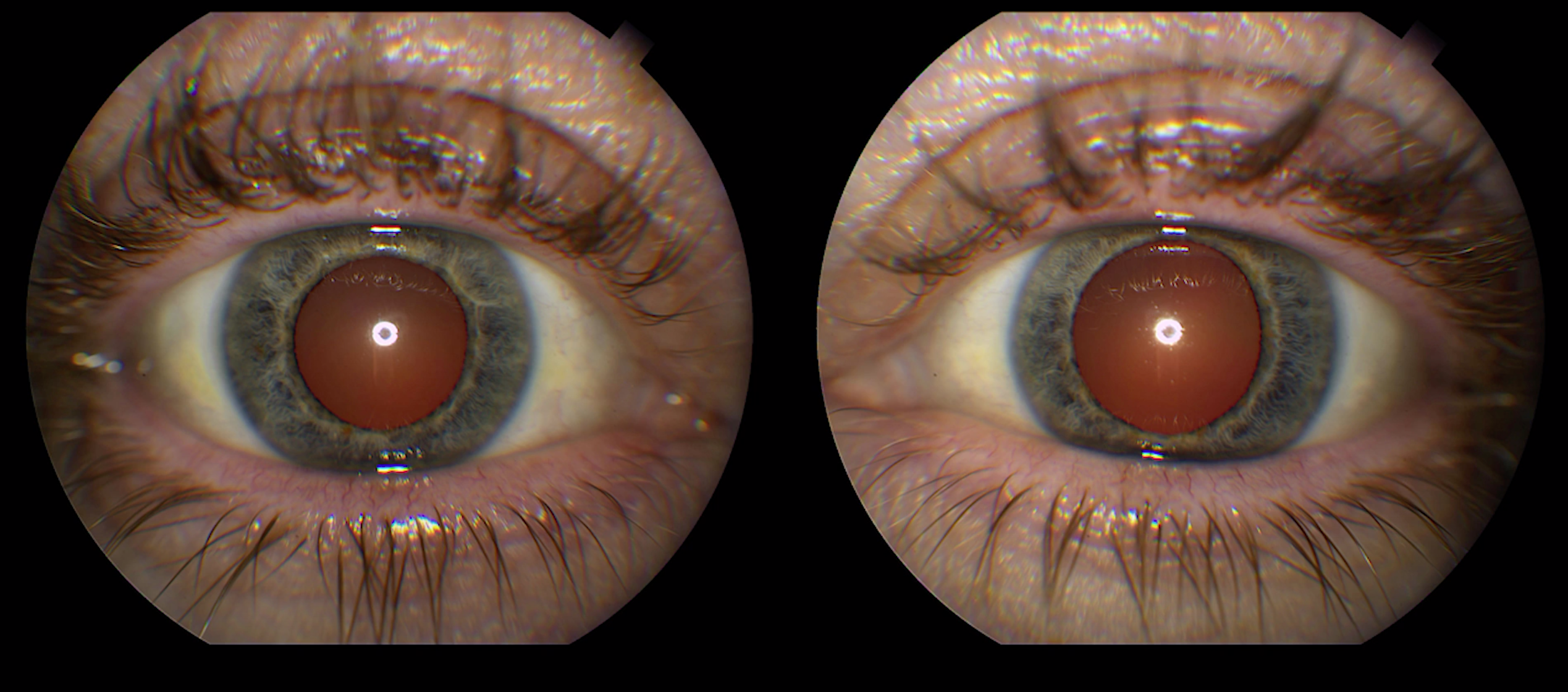[1]
. Childhood cataract: magnitude, management, economics and impact. Community eye health. 2004:17(50):17-8
[PubMed PMID: 17491800]
[2]
Gilbert C, Foster A. Childhood blindness in the context of VISION 2020--the right to sight. Bulletin of the World Health Organization. 2001:79(3):227-32
[PubMed PMID: 11285667]
[3]
Khokhar SK, Pillay G, Dhull C, Agarwal E, Mahabir M, Aggarwal P. Pediatric cataract. Indian journal of ophthalmology. 2017 Dec:65(12):1340-1349. doi: 10.4103/ijo.IJO_1023_17. Epub
[PubMed PMID: 29208814]
[4]
Solebo AL, Teoh L, Rahi J. Epidemiology of blindness in children. Archives of disease in childhood. 2017 Sep:102(9):853-857. doi: 10.1136/archdischild-2016-310532. Epub 2017 May 2
[PubMed PMID: 28465303]
[5]
Mets MB. Eye manifestations of intrauterine infections. Ophthalmology clinics of North America. 2001 Sep:14(3):521-31
[PubMed PMID: 11705152]
[6]
Trumler AA. Evaluation of pediatric cataracts and systemic disorders. Current opinion in ophthalmology. 2011 Sep:22(5):365-79. doi: 10.1097/ICU.0b013e32834994dc. Epub
[PubMed PMID: 21832913]
Level 3 (low-level) evidence
[7]
Santana A, Waiswo M. The genetic and molecular basis of congenital cataract. Arquivos brasileiros de oftalmologia. 2011 Mar-Apr:74(2):136-42
[PubMed PMID: 21779674]
[8]
Wadhwani M, Vashist P, Singh SS, Gupta V, Gupta N, Saxena R. Prevalence and causes of childhood blindness in India: A systematic review. Indian journal of ophthalmology. 2020 Feb:68(2):311-315. doi: 10.4103/ijo.IJO_2076_18. Epub
[PubMed PMID: 31957718]
Level 1 (high-level) evidence
[9]
Sheeladevi S, Lawrenson JG, Fielder AR, Suttle CM. Global prevalence of childhood cataract: a systematic review. Eye (London, England). 2016 Sep:30(9):1160-9. doi: 10.1038/eye.2016.156. Epub 2016 Aug 12
[PubMed PMID: 27518543]
Level 1 (high-level) evidence
[10]
Javadiyan S, Craig JE, Souzeau E, Sharma S, Lower KM, Mackey DA, Staffieri SE, Elder JE, Taranath D, Straga T, Black J, Pater J, Casey T, Hewitt AW, Burdon KP. High-Throughput Genetic Screening of 51 Pediatric Cataract Genes Identifies Causative Mutations in Inherited Pediatric Cataract in South Eastern Australia. G3 (Bethesda, Md.). 2017 Oct 5:7(10):3257-3268. doi: 10.1534/g3.117.300109. Epub 2017 Oct 5
[PubMed PMID: 28839118]
Level 3 (low-level) evidence
[11]
Cvekl A, Duncan MK. Genetic and epigenetic mechanisms of gene regulation during lens development. Progress in retinal and eye research. 2007 Nov:26(6):555-97
[PubMed PMID: 17905638]
[12]
Verma IC, Paliwal P, Singh K. Genetic Testing in Pediatric Ophthalmology. Indian journal of pediatrics. 2018 Mar:85(3):228-236. doi: 10.1007/s12098-017-2453-7. Epub 2017 Oct 2
[PubMed PMID: 28971364]
[13]
Patil-Chhablani P, Kekunnaya R, Nischal KK. Complex Cases in Pediatric Cataract. Developments in ophthalmology. 2016:57():85-106. doi: 10.1159/000442505. Epub 2016 Apr 1
[PubMed PMID: 27043394]
Level 3 (low-level) evidence
[14]
Bökenkamp A,Ludwig M, The oculocerebrorenal syndrome of Lowe: an update. Pediatric nephrology (Berlin, Germany). 2016 Dec;
[PubMed PMID: 27011217]
[15]
Amaya L, Taylor D, Russell-Eggitt I, Nischal KK, Lengyel D. The morphology and natural history of childhood cataracts. Survey of ophthalmology. 2003 Mar-Apr:48(2):125-44
[PubMed PMID: 12686301]
Level 3 (low-level) evidence
[16]
Zetterström C, Lundvall A, Kugelberg M. Cataracts in children. Journal of cataract and refractive surgery. 2005 Apr:31(4):824-40
[PubMed PMID: 15899463]
[17]
Braddick O, Atkinson J. Development of human visual function. Vision research. 2011 Jul 1:51(13):1588-609. doi: 10.1016/j.visres.2011.02.018. Epub 2011 Feb 26
[PubMed PMID: 21356229]
[19]
Giangiacomo A, Beck A. Pediatric glaucoma: review of recent literature. Current opinion in ophthalmology. 2017 Mar:28(2):199-203. doi: 10.1097/ICU.0000000000000349. Epub
[PubMed PMID: 27875350]
Level 3 (low-level) evidence
[20]
Vasavada AR, Nihalani BR. Pediatric cataract surgery. Current opinion in ophthalmology. 2006 Feb:17(1):54-61
[PubMed PMID: 16436925]
Level 3 (low-level) evidence
[21]
Vasavada V. Paradigms for Pediatric Cataract Surgery. Asia-Pacific journal of ophthalmology (Philadelphia, Pa.). 2018 Mar-Apr:7(2):123-127. doi: 10.22608/APO.2017202. Epub 2017 Sep 25
[PubMed PMID: 28971632]
[22]
Adams GGW. The Enduring Value of Newborn Red Reflex Testing as a Screening Tool. JAMA ophthalmology. 2021 Jan 1:139(1):40-41. doi: 10.1001/jamaophthalmol.2020.4853. Epub
[PubMed PMID: 33180105]
[23]
Subhi Y, Schmidt DC, Al-Bakri M, Bach-Holm D, Kessel L. Diagnostic Test Accuracy of the Red Reflex Test for Ocular Pathology in Infants: A Meta-analysis. JAMA ophthalmology. 2021 Jan 1:139(1):33-40. doi: 10.1001/jamaophthalmol.2020.4854. Epub
[PubMed PMID: 33180103]
Level 1 (high-level) evidence
[24]
Sun M, Ma A, Li F, Cheng K, Zhang M, Yang H, Nie W, Zhao B. Sensitivity and Specificity of Red Reflex Test in Newborn Eye Screening. The Journal of pediatrics. 2016 Dec:179():192-196.e4. doi: 10.1016/j.jpeds.2016.08.048. Epub 2016 Sep 15
[PubMed PMID: 27640356]
[25]
Gurney SP, Makanjuola T, Kutubi M, Parulekar M, Abbott J. How to use…the direct ophthalmoscope. Archives of disease in childhood. Education and practice edition. 2018 Apr:103(2):102-109. doi: 10.1136/archdischild-2016-312378. Epub 2017 Sep 21
[PubMed PMID: 28935833]
[26]
Mannstadt M, Bilezikian JP, Thakker RV, Hannan FM, Clarke BL, Rejnmark L, Mitchell DM, Vokes TJ, Winer KK, Shoback DM. Hypoparathyroidism. Nature reviews. Disease primers. 2017 Aug 31:3():17055. doi: 10.1038/nrdp.2017.55. Epub 2017 Aug 31
[PubMed PMID: 28857066]
[27]
Drusin LM. Syphilis: clinical manifestations, diagnosis, and treatment. The Urologic clinics of North America. 1984 Feb:11(1):121-30
[PubMed PMID: 6369700]
[28]
Jyoti M,Shirke S,Matalia H, Congenital rubella syndrome: Global issue. Journal of cataract and refractive surgery. 2015 May;
[PubMed PMID: 26049858]
[29]
Anderson S. GALT Deficiency Galactosemia. MCN. The American journal of maternal child nursing. 2018 Jan/Feb:43(1):44-51. doi: 10.1097/NMC.0000000000000388. Epub
[PubMed PMID: 29215423]
[30]
Savige J, Sheth S, Leys A, Nicholson A, Mack HG, Colville D. Ocular features in Alport syndrome: pathogenesis and clinical significance. Clinical journal of the American Society of Nephrology : CJASN. 2015 Apr 7:10(4):703-9. doi: 10.2215/CJN.10581014. Epub 2015 Feb 3
[PubMed PMID: 25649157]
[31]
Carrillo-Carrasco N, Chandler RJ, Venditti CP. Combined methylmalonic acidemia and homocystinuria, cblC type. I. Clinical presentations, diagnosis and management. Journal of inherited metabolic disease. 2012 Jan:35(1):91-102. doi: 10.1007/s10545-011-9364-y. Epub 2011 Jul 12
[PubMed PMID: 21748409]
[32]
Ferenci P. Diagnosis of Wilson disease. Handbook of clinical neurology. 2017:142():171-180. doi: 10.1016/B978-0-444-63625-6.00014-8. Epub
[PubMed PMID: 28433100]
[33]
Kaya A. Preoperative usage of ultrasound biomicroscopy in pediatric cataract. Arquivos brasileiros de oftalmologia. 2016 Feb:79(1):62. doi: 10.5935/0004-2749.20160019. Epub
[PubMed PMID: 26840173]
[34]
Khokhar S, Tejwani LK, Kumar G, Kushmesh R. Approach to cataract with persistent hyperplastic primary vitreous. Journal of cataract and refractive surgery. 2011 Aug:37(8):1382-5. doi: 10.1016/j.jcrs.2011.06.012. Epub
[PubMed PMID: 21782083]
[35]
Capozzi P, Morini C, Piga S, Cuttini M, Vadalà P. Corneal curvature and axial length values in children with congenital/infantile cataract in the first 42 months of life. Investigative ophthalmology & visual science. 2008 Nov:49(11):4774-8. doi: 10.1167/iovs.07-1564. Epub 2008 May 23
[PubMed PMID: 18502997]
[36]
Moshirfar M, Buckner B, Ronquillo YC, Hofstedt D. Biometry in cataract surgery: a review of the current literature. Current opinion in ophthalmology. 2019 Jan:30(1):9-12. doi: 10.1097/ICU.0000000000000536. Epub
[PubMed PMID: 30394990]
Level 3 (low-level) evidence
[37]
Trivedi RH, Wilson ME. Keratometry in pediatric eyes with cataract. Archives of ophthalmology (Chicago, Ill. : 1960). 2008 Jan:126(1):38-42. doi: 10.1001/archophthalmol.2007.22. Epub
[PubMed PMID: 18195216]
[38]
Infant Aphakia Treatment Study Group, Lambert SR, Buckley EG, Drews-Botsch C, DuBois L, Hartmann E, Lynn MJ, Plager DA, Wilson ME. The infant aphakia treatment study: design and clinical measures at enrollment. Archives of ophthalmology (Chicago, Ill. : 1960). 2010 Jan:128(1):21-7. doi: 10.1001/archophthalmol.2009.350. Epub
[PubMed PMID: 20065212]
[39]
Lim ME, Buckley EG, Prakalapakorn SG. Update on congenital cataract surgery management. Current opinion in ophthalmology. 2017 Jan:28(1):87-92
[PubMed PMID: 27653605]
Level 3 (low-level) evidence
[40]
Lin AA, Buckley EG. Update on pediatric cataract surgery and intraocular lens implantation. Current opinion in ophthalmology. 2010 Jan:21(1):55-9. doi: 10.1097/ICU.0b013e32833383cb. Epub
[PubMed PMID: 19855277]
Level 3 (low-level) evidence
[41]
Eibschitz-Tsimhoni M, Archer SM, Del Monte MA. Intraocular lens power calculation in children. Survey of ophthalmology. 2007 Sep-Oct:52(5):474-82
[PubMed PMID: 17719370]
Level 3 (low-level) evidence
[42]
Vasavada V, Shah SK, Vasavada VA, Vasavada AR, Trivedi RH, Srivastava S, Vasavada SA. Comparison of IOL power calculation formulae for pediatric eyes. Eye (London, England). 2016 Sep:30(9):1242-50. doi: 10.1038/eye.2016.171. Epub 2016 Aug 5
[PubMed PMID: 27494083]
[43]
Dahan E, Drusedau MU. Choice of lens and dioptric power in pediatric pseudophakia. Journal of cataract and refractive surgery. 1997:23 Suppl 1():618-23
[PubMed PMID: 9278814]
[44]
Enyedi LB, Peterseim MW, Freedman SF, Buckley EG. Refractive changes after pediatric intraocular lens implantation. American journal of ophthalmology. 1998 Dec:126(6):772-81
[PubMed PMID: 9860000]
[45]
Cheng KP, Hiles DA, Biglan AW. The differential diagnosis of leukokoria. Pediatric annals. 1990 Jun:19(6):376-83, 386
[PubMed PMID: 2200999]
[46]
Kembhavi SA, Sable N, Vora T, Arora B. Leukokoria: All That's White Is Not Retinoblastoma. Journal of clinical oncology : official journal of the American Society of Clinical Oncology. 2011 Jul 1:29(19):e586-7. doi: 10.1200/JCO.2011.34.8334. Epub 2011 Apr 18
[PubMed PMID: 21502547]
[47]
Kalia A, Gandhi T, Chatterjee G, Swami P, Dhillon H, Bi S, Chauhan N, Gupta SD, Sharma P, Sood S, Ganesh S, Mathur U, Sinha P. Assessing the impact of a program for late surgical intervention in early-blind children. Public health. 2017 May:146():15-23. doi: 10.1016/j.puhe.2016.12.036. Epub 2017 Feb 1
[PubMed PMID: 28404468]
[48]
Shrestha UD, Shrestha MK. Visual Axis Opacification in Children Following Paediatric Cataract Surgery. JNMA; journal of the Nepal Medical Association. 2014 Oct-Dec:52(196):1024-30
[PubMed PMID: 26982905]
[49]
Khaja WA, Verma M, Shoss BL, Yen KG. Visual axis opacification in children. Ophthalmology. 2011 Jan:118(1):224-5. doi: 10.1016/j.ophtha.2010.08.030. Epub
[PubMed PMID: 21199720]
[50]
Baden C, Shija F, Lewallen S, Courtright P, Hall A. Glaucoma after pediatric cataract surgery in a population with limited access to care. Journal of AAPOS : the official publication of the American Association for Pediatric Ophthalmology and Strabismus. 2013 Apr:17(2):158-62. doi: 10.1016/j.jaapos.2012.11.009. Epub 2013 Mar 22
[PubMed PMID: 23528376]
[51]
Whitman MC, Vanderveen DK. Complications of pediatric cataract surgery. Seminars in ophthalmology. 2014 Sep-Nov:29(5-6):414-20. doi: 10.3109/08820538.2014.959192. Epub
[PubMed PMID: 25325868]
[52]
Gasper C, Trivedi RH, Wilson ME. Complications of Pediatric Cataract Surgery. Developments in ophthalmology. 2016:57():69-84. doi: 10.1159/000442502. Epub 2016 Apr 1
[PubMed PMID: 27043393]
[53]
Repka MX. Visual Rehabilitation in Pediatric Aphakia. Developments in ophthalmology. 2016:57():49-68. doi: 10.1159/000442501. Epub 2016 Apr 1
[PubMed PMID: 27043392]
[54]
Vagge A, Nelson LB. Amblyopia update: new treatments. Current opinion in ophthalmology. 2016 Sep:27(5):380-6. doi: 10.1097/ICU.0000000000000293. Epub
[PubMed PMID: 27152486]
Level 3 (low-level) evidence

